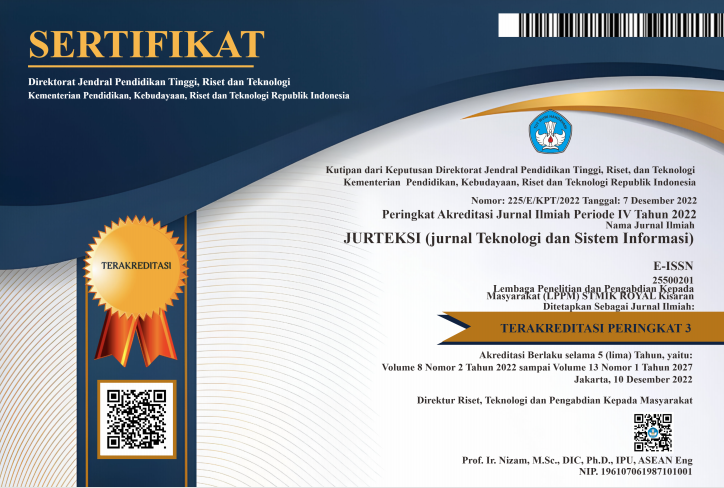AUTOMATIC INDICATOR SYSTEM FOR WSN UTILIZATION IOT STUFFING MACHINE INFUSION WATER VOLUME DETECTOR
Abstract
Abstract: The use of intravenous infusion sets has greatly increased, but there are some problemscaused by various causes, namely negligence by nurses, lack ofsupervision by the patient's family and from the actions of the patient who caninterfere with the infusion system. The urgency expected to be madeone of the effective and efficient solutions in the automation system for detecting the volume of infusion water and this innovation is expected to help nurses in monitoring intravenous fluid replacement, reducing the risk of delays in replacing intravenous fluids for patients and the public to know the system is running out of infusion water with the sound of an alarm/buzzer. The purpose of this study was to design an infusion control device by detecting the volume of infusion water based on the weight of the infusion using a Wireless Sensor Network. The Wireless Sensor Network used by the load cell sensor functions to detect the weight value of the infusion water in the infusion bag. The buzzer becomes an indicator indicating that the infusion bag is ready to be replaced and also through the Stuffing Machine the Internet of Things will inform the nurse via the Telegram application to inform that the infusion bag is worth replacing. So that nurses can monitor the process of detecting the volume of infused water remotely. Keywords: Arduino, Blind Detector, Indicator system, Prototype
Abstrak: Penggunaan infus set intravena sangat meningkat, namun ada beberapa masalah
yang disebabkan oleh berbagai penyebab yaitu kelalaian oleh perawat, kurangnya
pengawasan oleh keluarga pasien dan dari tindakan pasien yang dapat
menghambat sistem kerja pada infus. Urgensi yang diharapkan agar dapat dijadikan
salah satu solusi yang efektif dan efisien dalam sistem otomatisasi pendeteksian volume air infus dan inovasi ini diharapkan bisa membantu perawat dalam pemantauan penggantian cairan intravena, mengurangi resiko keterlambatan penggantian cairan intravena bagi pasien dan masyarakatpun mengetahui sistem habisnya air infus dengan bunyinya alarm/buzzer. Tujuan penelitian ini menghasilkan rancangan alat pengontrolan infus dengan cara mendeteksi volume air infus berdasarkan berat dari air infus dengan menggunakan Wireless Sensor Network. Wireless Sensor Network yang digunakan sensor load cell berfungsi untuk mendeteksi nilai berat air infus yang ada pada kantung infus. Buzzer menjadi sebuah indikator yang menandakan bahwa kantung airinfus sudah layak diganti dan juga melalui Stuffing Machine Internet Of Things akan menginformasikan ke perawat melalui aplikasi Telegram menginformasikan kantung air infus sudah layak diganti. Sehingga perawat dapat memonitoring proses pendeteksi volume air infus dari jarak jauh..
Kata kunci: Infused Water; Load Cells; Prototypes; Stuffing Machine Internet Of Things; Volume
References
R. T. Yunardi, D. Setiawan, F. Maulina, and T. A. Prijo, “Pengembangan Sistem Kontrol dan Pemantauan Tetesan Cairan Infus Otomatis Berbasis Labview dengan Logika Fuzzy,†J. Teknol. Inf. dan Ilmu Komput., vol. 5, no. 4, p. 403, 2018, doi: 10.25126/jtiik.201854766.
G. Priyandoko, “Rancang Bangun Sistem Portable Monitoring Infus Berbasis Internet of Things,†Jambura J. Electr. Electron. Eng., vol. 3, no. 2, pp. 56–61, 2021, doi: 10.37905/jjeee.v3i2.10508.
K. Kamarudin, M. Z. Elfirman, I. Maulida, F. D. Marleny, R. Ansari, and M. Fatahulrahman, “Deteksi Titik Kebakaran Lahan Menggunakan Wireless Sensor Network,†J. Komtika (Komputasi dan Inform., vol. 6, no. 1, pp. 49–62, 2022, doi: 10.31603/komtika.v6i1.6264.
M. Yoga Firdaus, A. Shahib Al Banna, A. Thariq Saputra, J. Teknik Elektro, and P. H. Negeri Banjarmasin Jl Brigjen Hasan Basri, “Sistem Kontrol Dan Monitoring Infus Berbasis Nodemcu,†Semin. Nas. Terap. Ris. Inov. Ke-6 ISAS Publ. Ser. Eng. Sci., vol. 6, no. 1, pp. 372–378, 2020.
F. Ifacturrohman and I. Sucahyo, “Rancangan Alat Monitor Volume Air Dalam Tangki Berbasis IoT dan Smarphone,†Inov. Fis. Indones., vol. 9, no. 2, pp. 56–63, 2020, doi: 10.26740/ifi.v9n2.p56-63.
D. Retno, M. W. Sari, and P. W. Ciptadi, “Pengembangan Sistem Kontrol dan Monitoring Jumlah Tetesan Infus Pada Pasien Menggunakan Android,†Semin. Nas. Din. Inform., pp. 150–154, 2021.
M. S. N. Ilhami and F. Utaminingrum, “Rancang Bangun Sistem Pengaturan Kecepatan Otomatis Jumlah Tetesan Infus Pada Pasien Berdasarkan Uji Linieritas,†J. Pengemb. Teknol. Inf. dan Ilmu Komput. e-ISSN, vol. 2548, no. 10, p. 964X, 2020.
I. Sucipta, J. W. Simatupang, C. Kaswandi, and I. Purnama, “Prototipe Pemantauan Tetes Cairan Infus Berbasis IoT Terkoneksi Perangkat Android,†J. Teknol. Elektro, vol. 12, no. 3, p. 113, 2021, doi: 10.22441/jte.2021.v12i3.003.
M. Diana, K. Kemalasari, E. Puspita, and A. Sasongko Jati, “Sistem Kendali dan Monitoring Cairan Infus pada Proses Tatalaksana Dehidrasi Berbasis IoT,†J. Rekayasa Elektr., vol. 17, no. 3, pp. 145–152, 2021, doi: 10.17529/jre.v17i3.21636.
F. Dawwas, L. Anifah, N. Kholis, and F. Baskoro, “Sistem Monitoring Ketinggian Cairan Infus dan Suhu Pada Pasien Covid-19 Berbasis IoT ESP8266 dan Firebase,†J. Tek. Elektro, vol. 10, no. 3, pp. 741–748, 2021.
H. S. Azhari Lubis, I. R. Munthe, and R. Pane, “Infus Desain Notifikasi Dengan Aplikasi Media Sosial Berbasis Internet of Things (IOT),†J. Tek. Inform. UNIKA St. Thomas, vol. 06, pp. 117–125, 2021, doi: 10.54367/jtiust.v6i1.1286.
Z. Azmi, K. Ibnutama, H. Putra, and W. Sianipar, “Monitoring Infus Pada Pasien Berbasis Internet Of Things ( Iot ) Dengan Aplikasi Blynk Menggunakan Metode Simplex,†vol. 5, pp. 74–80, 2023.













